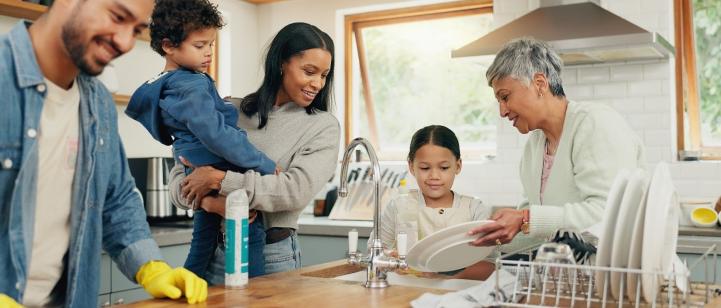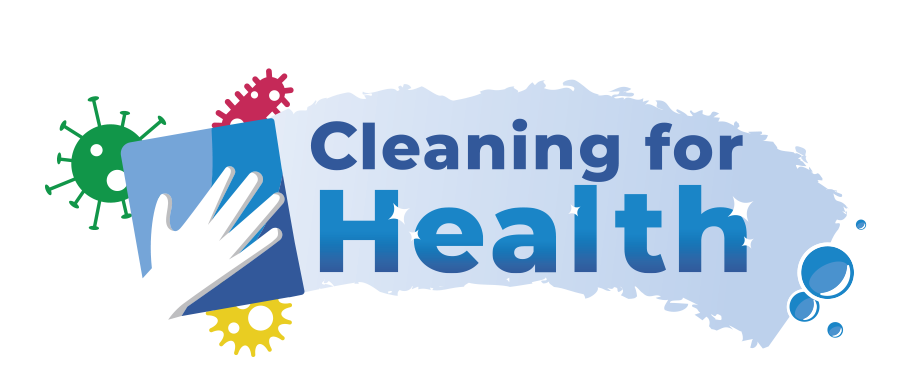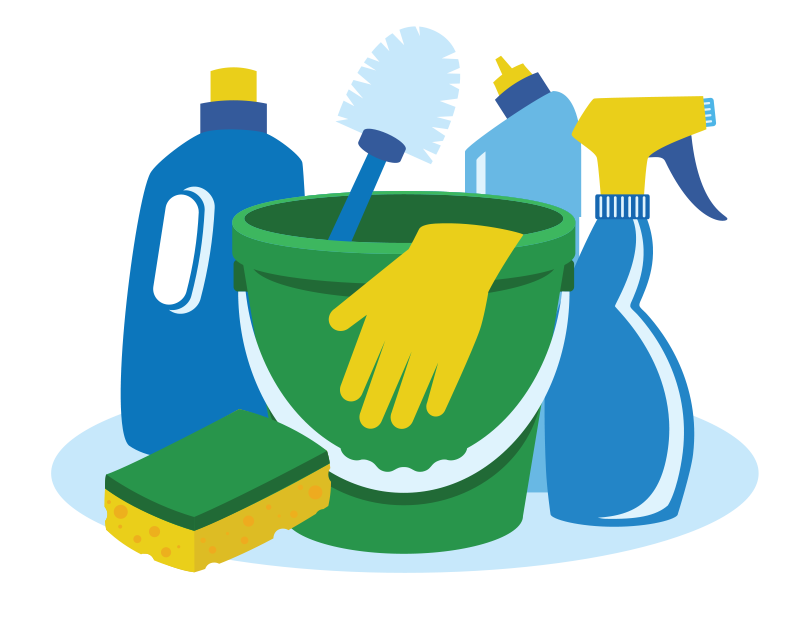
 Did you know that there are different levels of cleaning? Not just routine cleaning versus the less frequent deep cleaning that often gets done in the spring, but different levels within routine cleaning that you may choose depending on the needs of your family and friends or if someone in the home is sick. Learn the Levels of Clean and use them, along with the Levels of Laundry, to make the best cleaning choices for the health and well-being of you and your loved ones.
Did you know that there are different levels of cleaning? Not just routine cleaning versus the less frequent deep cleaning that often gets done in the spring, but different levels within routine cleaning that you may choose depending on the needs of your family and friends or if someone in the home is sick. Learn the Levels of Clean and use them, along with the Levels of Laundry, to make the best cleaning choices for the health and well-being of you and your loved ones.
Always remember to read and follow each product’s label information and directions for use for applying best practices for use, safety, and storage conditions.
 Levels of Clean
Levels of Clean
Prevention at this level is key:
- Kitchen: Wash the dishes. Take out trash and any recycling or compost and be sure to wash hands afterward. Clean the sink, cabinets, and countertops.
- Bathroom: Clean weekly, prioritizing the bath, shower, toilet, and sink. Clean or disinfect door handles, light switches, toilet flush lever and seat, sink faucet controls, and countertop. Launder towels regularly.
- Bedroom: Launder clothes as needed, sheets at least every other week, and other bedding periodically.
- All Living Spaces: Vacuum or sweep and mop floors weekly. Declutter and dust regularly. Clean frequently-touched surfaces including light switches and doorknobs often and consider disinfecting. Clean other surfaces when visibly dirty and follow manufacturer instructions when cleaning electronics.
More involved prevention and maintenance required:
- Kitchen: In addition to cleaning more frequently, disinfect frequently-touched surfaces, including sink handles, countertops, drawer and refrigerator handles, switches, trash can lids, and appliances. Sanitize the inside of the refrigerator with diluted bleach, sanitizing products, or hot, soapy water.
- Bathroom: Clean more frequently, then disinfect, focusing on frequently-touched surfaces including the toilet lid, seat, and flushing lever and sink faucet. Launder towels and the shower curtain.
- Bedroom: After an illness, launder clothes and bedding and consider using a laundry sanitizer or bleach. Disinfect frequently-touched surfaces. Vacuum and dust throughout the week to decrease allergens. Launder or disinfect toys in a child’s bedroom. For small children, rinse toys after disinfecting. Clean blinds or curtains.
- All Living Spaces: Clean and disinfect doorknobs and light switches. Thoroughly vacuum carpets and consider a sanitizing spray for heavily trafficked areas. For uncarpeted floors, sweep then mop using hot, soapy water. Consider putting wipeable covers on electronics to make them easier to clean and disinfect.
Enhanced precautions are needed, including wearing gloves while cleaning.
- Kitchen: Pre-clean surfaces with soap and water before disinfecting. Wash dishes in the dishwasher, using the sanitize setting if available.
- Bathroom: Clean and disinfect regularly. If possible, have anyone who is sick use a separate bathroom from the rest of the household.
- Bedroom: Clothes from sick persons should be washed as needed during the week and sheets should be laundered once a week. Deep clean floors and other surfaces after illness to prevent reinfection or spreading to others in the household.
- All Living Spaces: Clean and disinfect surfaces. Disinfectants designed for soft surfaces and steam cleaning can help with fabrics that cannot be laundered. Clean and disinfect toys. If a surface has been soiled with vomit or diarrhea, clean up any mess with paper towels, put in a trash bag, and dispose of it immediately before cleaning and disinfecting the affected area.
Resources:
https://www.epa.gov/pesticide-registration/selected-epa-registered-disinfectants
https://www.cdc.gov/hygiene/about/when-and-how-to-clean-and-disinfect-your-home.html